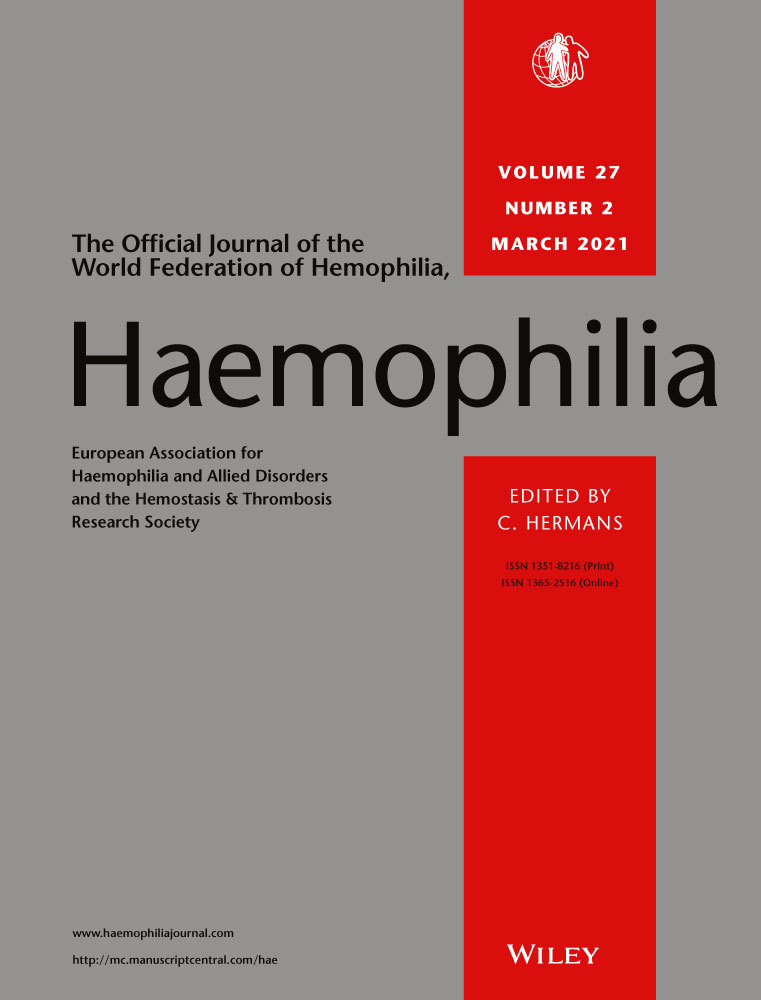Using an educational intervention to assess and improve disease-specific knowledge and health literacy and numeracy in adolescents and young adults with haemophilia A and B
Abstract
Introduction
Health literacy (HL) and health numeracy (HN) are underestimated barriers to treatment adherence in patients with haemophilia.
Aim
To test the ability of an educational intervention to improve knowledge, HL, HN, adherence and joint health in adolescent and young adult (AYA) males with haemophilia.
Methods
We performed a longitudinal pilot study of 41 participants aged 12–21 years with haemophilia A or B during two clinic visits 6–12 months apart. The first visit included a comprehensive pre-intervention assessment: demographics, knowledge survey, Montreal Cognitive Assessment testing, 5-question tool to assess baseline HN, assessment of HL with the Rapid Estimate of Adolescent Literacy in Medicine tool, history of adherence and Haemophilia Joint Health Score (HJHS). An educational intervention using a visual aid explained basic pharmacokinetic (PK) concepts and personal teaching regarding haemophilia treatment regimens was used during this visit. The second visit included a post-intervention assessment: a reassessment of knowledge, HL, HN, HJHS, adherence to prescribed therapy and number of joint bleeds since the pre-intervention visit.
Results
Forty-one males with haemophilia A or B were enrolled in the study. Of these, 33 completed the post-intervention assessment. Knowledge (p = .002) and HN (p = .05) were significantly improved post-intervention, although the HL, number of joint bleeds, adherence to prescribed therapy and HJHS were not.
Conclusions
Participants with low HL and/or HN may benefit from alternate methods of education such as audiovisual material. Education using audiovisual materials improved knowledge and HN in this study; however, this did not affect adherence to prescribed therapy.
Disclosure
MLS has acted as a paid consultant for Bayer, CSL Behring, HEMA Biologics, Novo Nordisk, Octapharma, and Takeda. NB has research support form Takeda for this study (IIR grant # HS16-34845). The other author stated that they had no interests which might be perceived as posing a conflict or bias.
Open Research
DATA AVAILABILITY STATEMENT
Data available on request due to privacy/ethical restrictions.




